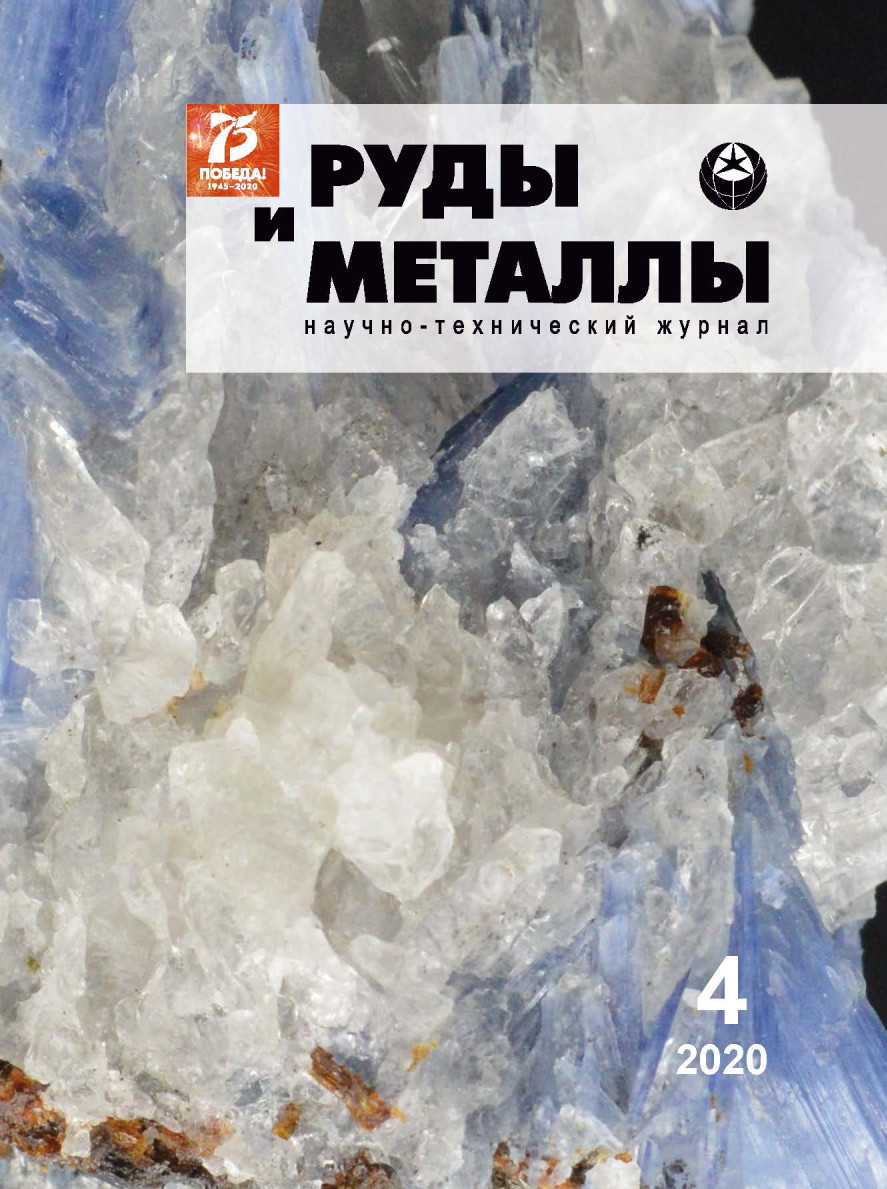
“Ores and Metals” journal, N 4, 2020: an overview
“Applied metallogeny” section first paper, “Gold deposits of the Guiana shield”, describes a number of major Guyana and Venezuela deposits confined to Lower Proterozoic greenstone belts. Its author, A.P Maslovsky, is Director for business development (JSC Pokrovsky mine); since 2009, he has been involved in activities at Quartzstone ore field (Guyana). He pointed out its geological features, a brief study history and data on Las Cristinas-Brisas, Omai, Aurora, Toroparu, Tassavini and Monosi deposits’ identified resources are also provided.
“Methods and techniques of deposit forecasting, prospecting, assessment and exploration” section presents study results obtained by two Russian experts. The paper by TsNIGRI researchers (V.F. Rogizny, D.A. Kulikov, I.F. Migachev and D.A. Donets), “Pt-Pd-Ni-Cu ores opening and mining at Nittis-Kumuzhya-Travyanaya area”, reviews a prospective mining scheme of additionally explored areas of Monchegorsk ore district deposit, which supplied nickel, copper, cobalt, platinum and palladium as feedstock to Severonickel plant in 1936-1975. An unmined orebody hosted by the deposit has been studied for years by TsNIGRI researchers (V.F. Rogizny, I.A. Karpenko, N.G. Petrash and A.A. Cheremisin, among others); its resources were estimated at 57,103.2 kt of ore. At the new stage, specialists proposed efficient mining methods; on this basis, they provided a consolidated geological and economic estimate of the deposit conventional reserves to 500 m depth. The paper states the project payback period, it also validates its internal rate of return and viability under deteriorating economic conditions.
Tomsk Polytechnic University researchers (E.G. Yazikov, E.A. Filimonenko, Yu.A. Karpenko, A.Yu. Mishankin and Yu.P. Sobyanin) published a paper, “Testwork to improve a biogeochemical gold prospecting method in cryolite zone conditions”, summarizing study results within Vyunskoye ore field in Yakutia. For mineral prospecting, biogenic halos of their indicator elements are used to identify areas where these elements’ content in plants is certainly above the background. The authors discussed the essential methodical aspects of biogeochemical deposit prospecting, which ensure high efficiency of this approach. Based on study results, it was concluded that the optimal biological targets in concealed ore biogeochemical prospecting are moss (with no emphasis on species) and reindeer moss.
Researchers from JSC ALROSA (PJSC), Moscow branch of FSBI VSEGEI and IGM SB RAS presented a paper, “Genesis and age of Tomtor Nb and REE deposit ore strata, northeastern Siberian platform”; it is an analytical review of long-term research data. The research focused on intrusive massifs of Udzhinskaya alkaline ultrabasic rock and carbonatite province in the northeastern Siberian platform (Republic of Sakha (Yakutia)). Scientists have long been interested in this region due to the discovery of unique high-grade ores there in 1950-1960s. These ores are incomparable in terms of Fe, P, Al, rare (Nb, Y, Sc, etc.) and rare-earth elements content. A.V. Tolstov who has studied Tomtor massif for over 30 years and his coauthors, V.G. Cherenkov and L.N. Baranov, provide data on deposit formation features and validate the reasons for regarding Tomtor strata as a separate stratigraphic unit (it is dated at ~340-280 Ma).
The paper by JSC ALROSA (PJSC) experts, “Garnet and clinopyroxene features in diamondiferous eclogites of Udachnaya kimberlite pipe, Yakutia”: metasomatism evidence”, is the first one in “Rock and ore composition and properties” section. Z.V. Spetsius, L.V. Liskovaya, A.S. Ivanov and I.N. Bogush analyzed the deposit’s xenoliths of diamondiferous eclogites; they performed an extensive study to reveal structural and other features resulting from intensive metasomatic processes. The data obtained by the authors allow to update scientific ideas on diamond formation timing, patterns and conditions, and trace the related evolution of other minerals.
A.N. Yurichev published study results of accessory sulfides in chromitites at the underexplored Kharcheruzsky ultramafic massif within Khadatinsky ophiolite belt located in the northern Polar Urals. X-ray spectral analysis was used; as a result, the author obtained more data on accessory ore minerals in restite ultramafic rocks despite complicated prospecting and interpretation of these minerals due to their small particle size (5-20 micron) and minor content (0.01-2%) in rocks. This paper (“Accessory sulfides from Kharcheruzsky ultramafic massif chromites”) is the last one within the analytical block.
This issue includes materials devoted to the Great Patriotic War heroes. “Geologists about the war” section includes the last part of “Years of war” novel by S.D. Sher (1918-1990), a prominent world gold deposit researcher. Then, the background of his book, “My geological life” (published in 2020), is disclosed. E.A. Zvereva, PhD, who was a senior researcher in TsNIGRI (1954-1992) and S.D. Sher’s colleague, provided further details about his memoirs and scientific school.
The journal also includes paintings by A.A. Konstantinovsky (1930-2020) reflecting the nature of remote lands where he worked, key events of the 20th century and geological experience. “History pages” section dedicated to A.A. Konstantinovsky 90th anniversary contains his paintings, drawings and prose fragments.
The editorial board congratulated A.N. Baryshev and N.A. Leonova on their anniversaries on behalf of all their colleagues.
“In memoriam” section highlights a major contribution by I.A. Karpenko and O.S. Nabrovenkov (TsNIGRI veterans who recently passed away) to mineral exploration industry development.
Finally, a list of papers published in the journal this year is presented.



































































































